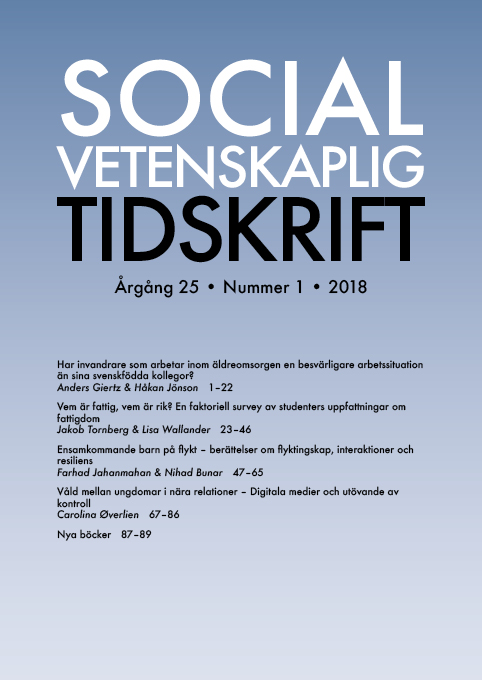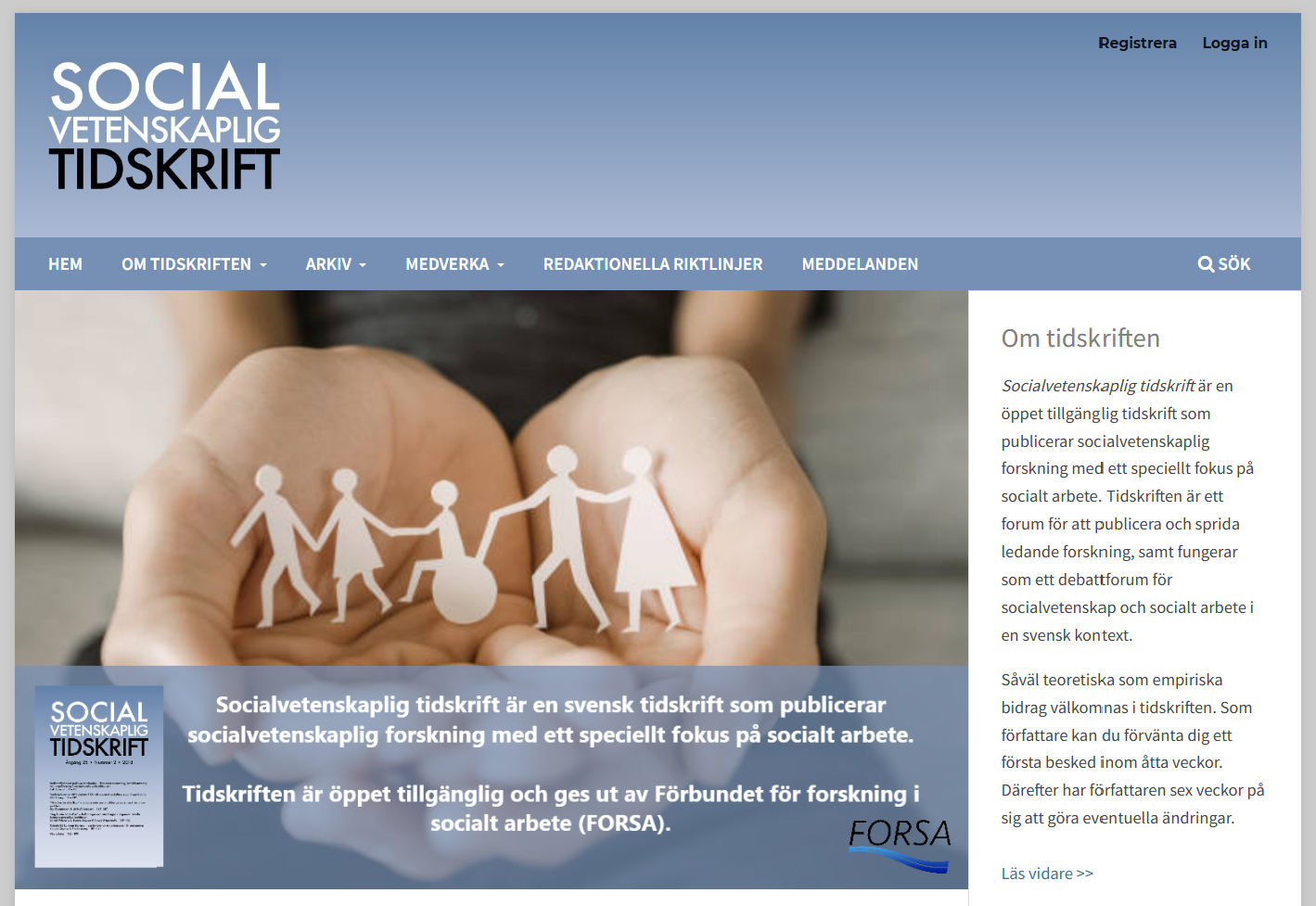Vem är fattig, vem är rik?
En faktoriell survey av studenters uppfattningar om fattigdom
DOI:
https://doi.org/10.3384/SVT.2018.25.1.2380Abstract
Who is poor, who is rich? A factorial survey of students’ beliefs about poverty
According to Swärd (2012, p. 36), poverty has “many faces and its appearance is dependent upon time, place and type of society, ideological ideas and values”. The aim of this article was to study the beliefs about poverty held by Swedish students of social work, nursing and pre-school teaching. The study employed the experimental factorial survey vignette method, involving the use of fictitious descriptions made up of randomly varying characteristics. In this study, these characteristics included operationalized measures of poverty in terms of input (the person’s income) and output (a number of relative deprivations, comprising various forms of consumption deemed as necessary for the inclusion of individuals in society, as well as the duration of these deprivations). In the study, each of 383 students was asked to assess 20 randomly varying fictitious persons and to note their judgements on a nine-point scale ranging from extremely poor to extremely rich. The results of two multilevel multivariate linear regression analyses showed that the students’ beliefs about poverty were related to both the input and the output of poverty, even though income was the dimension with by far the strongest effect on the judgements. Among the relative deprivations, those relating to the lack of economic means to pay bills or to buy medicine in general or clothes for one’s child were most strongly associated with beliefs about poverty. The analyses also showed that professional affiliation mattered, in the sense that students embarking on a nursing or a pre-school teaching career were generally less inclined to judge a person as poor, in comparison with students of social work. Further, the poorer the students judged themselves to be, the poorer they believed the vignette person to be. Finally, remaining unexplained variance indicated the existence of potentially significant unmeasured respondent characteristics or of random variation in poverty beliefs held by students within the three studied welfare professions.
Downloads
Publicerad
Referera så här
Nummer
Sektion
Licens
Allt material i Socialvetenskaplig tidskrift publiceras sedan 2022 (Vol 28 Nr 2) med omedelbar öppen tillgång (open access), under Creative Commons-licensen CC BY 4.0. Upphovsrätten till innehållet tillhör respektive författare.
Allt innehåll i tidskriften är fritt tillgängligt utan kostnad och får fritt läsas, laddas ned, kopieras, delas, skrivas ut och länkas. När innehållet används måste författare, källa och licens anges. Författaren kan fritt göra sin publicerade text tillgänglig på institutionella och internetbaserade arkiv, exempelvis sitt lärosätes digitala arkiv eller andra tjänster för detta.
Inga publiceringsavgifter tas ut vid publicering i Socialvetenskaplig tidskrift.


